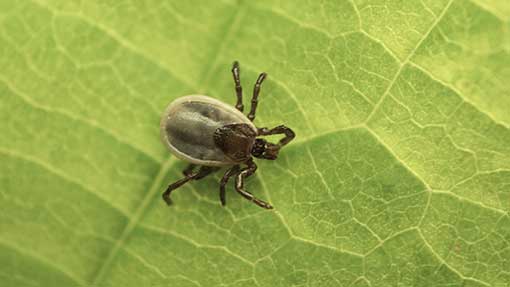Vet Viewpoint: Mild winter see more tick diseases

An increase in tick-related diseases and lameness problems in bulls are some of the issues being reported by vets this month. Members of the XLVet Group report on what has been seen on farm recently.
Bill Pepper
Cliffe Vet Group
East Sussex
An outbreak of mastitis saw three cows die within three days of being dried off. This highlights the need for sterile conditions when drying off.
The gangrenous mastitis was caused by the environmental bacteria Bacillus cereus, presumably inadvertently introduced and sealed into the udder at drying off. The source has yet to be established.
In these days of promoting a reliance on internal teat sealants alone to prevent infections during the dry period for uninfected cows, we dare not forget the associated risks.
These cows had been double tubed, so neither can we always rely on antibiotics to cover any errors at drying off, as some virulent bacteria are quicker off the blocks than the long-acting antibiotic present.
Ed Powell-Jackson
Synergy Farm Health
Dorset
Weather has meant a varied workload with wet spells disrupting the cows’ daily routine. Cattle have been housed one day and out at grass the next. Intakes of feed have been very variable. Left-displaced abomasums have been common, as have diet-related gut upsets.
We have already seen the first outbreaks of tick-related diseases in bought-in cattle – redwater and tick-borne fever being common.
Ticks seem numerous and active earlier in the year than normal – is this a legacy of the mild winter?
Ian Bates
Fenwold Vet Practice
Lincolnshire
Cattle work normally tails off about now as most of our farms are mixed arable and beef. However, we seem to be dealing with a few more lameness problems, such as bulls with foot abscesses and injuries while serving cows.
There is always a balance between treating or sending for slaughter, but they often can’t be transported and “on farm slaughter” only applies if they have suffered an “accident” and the incident is classed as an emergency (in the past 24 hours).
They also have to be outside of withhold periods for any medicines administered. This doesn’t leave a lot of room for manoeuvre and can result in not only losing the value of animal for meat, but also having to pay for its disposal.
Watching perfectly good meat being taken away for incineration is frustrating and shows the importance of early treatment.
Roger Scott
Scott, Mitchell and Associates
Northumberland
We’ve seen a few more cases of drunken lamb disease this spring and has been frustrating, as even early treated lambs inevitably died. Tests often showed that these lambs had kidney failure and we called it “nephrosis”.
Treatment was always futile, until now that is, as we have learned a bit more about this condition.
Possibly linked with a change in milk consumption or quality and perhaps with cryptosporidiosis or coccidiosis, these lambs are thought to have an abnormal fermentation in their large gut. This makes them not just drunk from the alcohol, but also acidotic, hence the kidney failure.
Treatment with bicarbonate of soda in a water drench helps, as does an injection of long-acting amoxycillin – an antibiotic that passes into the intestine and knocks out the fermentation.
